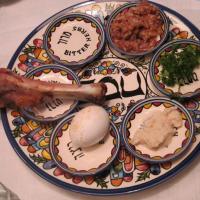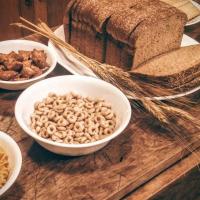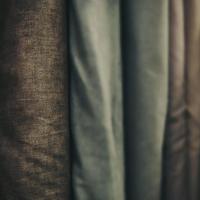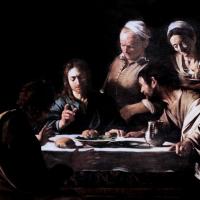Beth Immanuel is a friendly and welcoming community. Click here to learn what to expect when you visit.
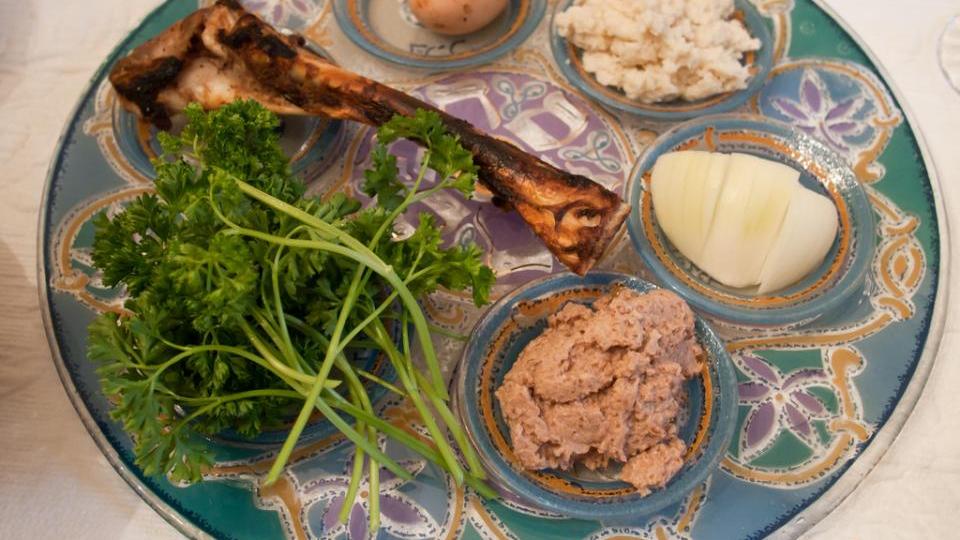
Hosting a Seder
A Big Mitzvah
So you’ve decided to do a Passover seder meal! Good. The celebration of the Passover with unleavened bread and bitter herbs is a commandment. Even more, it is a commandment of the Master to do this in remembrance of Him! You are preparing to keep one of the Master’s most sacred instructions to his disciples! God will bless you as you keep his Torah and His son’s command. May the Lord bless your home.
Calendar Dates
The first step to keeping the Feast of Unleavened Bread is to acknowledge it. Using a Jewish Calendar, find when the 15th of Nissan falls this year. Remember that a biblical day begins at sunset. The evening that begins the 15th of Nissan is the beginning of the festival and the seder night. (Hint: The 15th is always a full moon.) Unleavened Bread is seven days long. The first and seventh days are sabbaths. This means that no work should be performed (except food preparation) from sunset to sunset on the first and seventh days of the festival. The intervening days are not sabbaths, but they are still regarded as part of the festival.
Inviting Guests
When hosting a seder, it is a good idea to invite guests. The seder is a celebration of our shared salvation. The haggadah declares, “Whoever is hungry—let him come and eat! Whoever is needy—let him come and celebrate the Passover!” Our brothers and sisters are hungry for Torah. Our brothers and sisters are impoverished of the Master’s words and ways. Our homes should be open to anyone and everyone who shows an interest in learning the ways of Torah and the salvation of the Master.
Leaven
Prior to sunset, twenty-four hours before the seder, products containing chametz (wheat, barley, spelt, oats, rye) should be removed from the household. They should be consumed, sold, given away or disposed of before the festival. Sunset of seder night is the absolute deadline for removing the leaven. For the duration of the seven days, no product containing yeast can be eaten or brought into the home. It is a commandment to eat unleavened bread (that is matzah) on each of the seven days. Eat at least one piece a day. The spiritual lessons of the matzah and the cleansing out of the old leaven run deep through our scriptures. The haggadah will lead you through the ritual cleansing of your home.
For more specific information on leaven, and chametz and how to remove it, please read our "Leaven and Passover" article.
The Seder
Beginning at sunset on the evening that begins the 15th day of Nissan, everyone is enjoined to participate in a seder meal. The seder celebrates Israel’s redemption from Egypt. Bitter herbs, unleavened bread and the fruit of the vine are enjoyed while the story of the Exodus is retold. In temple times, lamb was eaten. Because there is no temple today, it is forbidden to make a sacrifice. Therefore lamb is never eaten at a seder. To do so would be to imply a sacrifice had been made! The seder meal simultaneously tells the story of the Exodus from Egypt and the Last Supper and Passion of the Master. It contains within it the elements of communion, and it is a remembrance of Him.
Set Order
Seder means “set order.” A Passover seder is called a seder because there is a set order to the rituals and elements of the meal. There are fifteen consecutive steps which constitute a full seder.
- Kaddesh (Sanctification): Declaration of the sanctity of the Festival over the first cup of wine. The first cup.
- Ur’chatz (Hand Washing): A ritual purification.
- Karpas (Dipping Vegetables): A reminder of the tears of Egypt.
- Yachatz (Breaking of Bread): Breaking unleavened bread, hiding the afikomen.
- Maggid (Telling the Story): Telling the story of the deliverance from Egypt. The second cup.
- Rachtzah (Hand Washing): Washing hands before eating bread.
- Motzi (Blessing for Bread): The blessing before eating bread.
- Matzah (Eating Unleavened Bread): The blessing for keeping the commandment to eat unleavened bread.
- Maror (Eating Bitter Herbs): The blessing for keeping the commandment to eat bitter herbs.
- Korech (Unleavened Bread With Bitter Herbs): Unleavened bread and bitter herbs are eaten together to keep the literal command, “You shall eat unleavened bread with bitter herbs.”
- Shulchan Orech (Setting the Table): The regular meal is eaten.
- Tzafun (Eating the afikomen): The afikomen, the hidden unleavened bread, is eaten.
- Barech (Grace After Meals): After eating, the Grace After Meals is prayed. The third cup.
- Hallel (Praise Psalms): Psalm 113-118 are sung or recited. The fourth cup.
- Nirtzah (Conclusion): The seder is concluded.
Haggadah
The haggadah is the booklet which guides you through these fifteen steps. Haggadah means telling, and the telling of the Exodus from Egypt is the main purpose of the Passover seder. Disciples also use the seder to retell the story of the Master’s last supper with them. We recommend the Vine of David Haggadah.
A haggadah is meant as a guide to this telling. It should be regarded as a rough outline, not a finished product. The host of the seder should feel free to improvise, to condense long passages, to skip certain sections, to linger on certain passages or to rework the material spontaneously. The important thing at a seder is that it is enjoyable. It is to be a time of joy. While the haggadah does guide you through the seder, it is important that the participants feel free to interrupt the haggadah with songs, hymns and choruses. The seder is a time of joy. The haggadah is only a guide, not an iron rule! Every seder is uniquely different.
A Meal for Children
The most important guests at a seder are the children. The intention of the seder is to retell the story of God’s salvation to the next generation. If the seder becomes boring for the children and they lose interest, then the whole exercise is futile. The host of the seder must do everything in his or her power to keep the children engaged and interested as the seder progresses.
Homes with young children should consider telling the Maggid (the story of the Exodus) on a child’s level. The haggadah tells it in midrashic form, on a sage’s level, which may not be appropriate for young children. You might consider shortening the Hallel and praying only the first blessing of Barech (Grace After Meals). Introduce games and amusements to keep the children engaged. (A reward for finding the afikomen can be a big incentive to stay at the table!)
The meal should be reverent, but don’t forget to have fun!
Strange Customs
Because the seder meal is actually an ancient ritual which predates Christianity by 1400 years, there are many customs in a seder meal which are unfamiliar to us. For example, at ancient banquets people did not sit in chairs, they reclined on pillows around a floor-level table. That is why we read in the gospels, “the Master was reclining at the table.” As a remembrance of “reclining,” everyone leans to the left when drinking the four cups or when eating the unleavened bread or bitter herbs. Dipping vegetables and washing hands before bread are also ancient customs from the days of the Master.
Four Cups
Through the course of the seder meal, four cups of wine or grape juice are consumed. The four cups correspond to the four expressions of redemption that God spoke to Israel in Exodus 6:6,7.
The Cup Of Salvation
The Sages accordingly ordained four cups to be drank on the eve of Passover to correspond with these four expressions in order to fulfill the verse found in Psalms 116:13: “I will lift up the cup of salvation, and call upon the name of the Lord.” (Shemot Rabbah 6.4)
Preparing for the Seder
In addition to cleansing the house of leaven and preparing a festive meal, there are some ritual foods that need to be prepared for a seder. Five items are arranged on a large plate. This plate is referred to as the seder plate.
On The Seder Plate
- Shankbone: A Piece of Roasted Lamb Shankbone (a chicken neck is often substituted).
- The shankbone of a lamb is in remembrance of the Passover Lamb sacrifice. Since there no longer is a temple, there is no sacrifice, but the shankbone serves as a reminder that in ancient times a roasted lamb was served.
- Roasted Egg: A Roasted Egg. (Some boil an egg in dark tea to make it look roasted.)
- The roasted egg is also placed on the seder plate as a remembrance of the additional sacrifices that were made at Passover. These additional peace offering sacrifices were also eaten on the Festival. Traditionally, the First Born at the table eat the roasted egg during Shulchan Orech in order to remember how God passed over the first born of Israel when he struck Egypt.
- Vegetable: Celery or Parsley.
- The Vegetable is dipped into saltwater and eaten during Karpas. The salty taste is meant to remind the participants of the tears that were wept in Egypt.
- Charoset: Apple-nut mix.
- The Charoset is a brown, mush, mixture that is meant to look like the mortar used in making bricks for the Egyptians. Actually it is a sweet fruit salad that serves as an antidote to the heat and pain and distaste of the bitter herbs. (See Recipe below).
- Bitter Herbs: Whole Romaine Lettuce Leaves and Grated Horseradish.
- The Romaine Lettuce Leaves and Grated Horseradish constitute the bitter herbs that the Torah commands are to be eaten along with unleavened bread at a seder meal. They are a remembrance of the bitterness of Egypt.
On The Table
In addition to the ritual items on the seder plate, you will also need the following things to successfully complete your seder:
- Wine: Enough grape juice or wine for each participant to drink four full cups.
- A linen: A linen to wrap the afikomen in.
- A large linen: A linen napkin to wrap the three whole unleavened bread-matzah crackers in.
- Unleavened bread: Enough unleavened bread (matzah crackers) for each participant to eat a full piece.
- Saltwater: A bowl of salt water for dipping vegetables.
- A basin of water with pitcher: For hand washing.
- A towel: For hand drying.
- Candles: Two or more candles for candle-lighting.
A Sweet Remembrance of Bitterness
On the Passover seder plate, the charoset is said to symbolize the mortar used by the slaves in Egypt. When charoset is properly made, it should look like mortar: a substance with a muddy, mush-like consistency.
Charoset serves more than just a symbolic purpose on the seder plate. It is used as a sweet antidote to the bitter herbs we are commanded to eat. The charoset is used to sweeten the romaine lettuce of Maror and to kill the heat and pain of the horseradish in Korech
Charoset Recipe
- 2 medium-sized apples
- 1/2 cup chopped walnuts
- 1/2-1 teaspoon cinnamon
- 2-3 tablespoon honey (or sweeten to taste)
Peel and core the apples. Then chop or grate into mush. Mix in the rest of the ingredients. Giving everything a spin in the food processor helps to make it into a mushy-mortar-like substance.
Although the bricks were in Egypt were made with straw, it is a universal charoset tradition to abstain from adding straw to the recipe in remembrance of the passage that says:
Remember, do not mix in any straw, as it is written, Then the slave drivers and the foremen went out and said to the people, “This is what Pharaoh says: ‘I will not give you any more straw.’” (Exodus 5:10)
More Messianic Passover Teachings
Want more about Passover from a Messianic Jewish perspective? Check out our Passover page!

